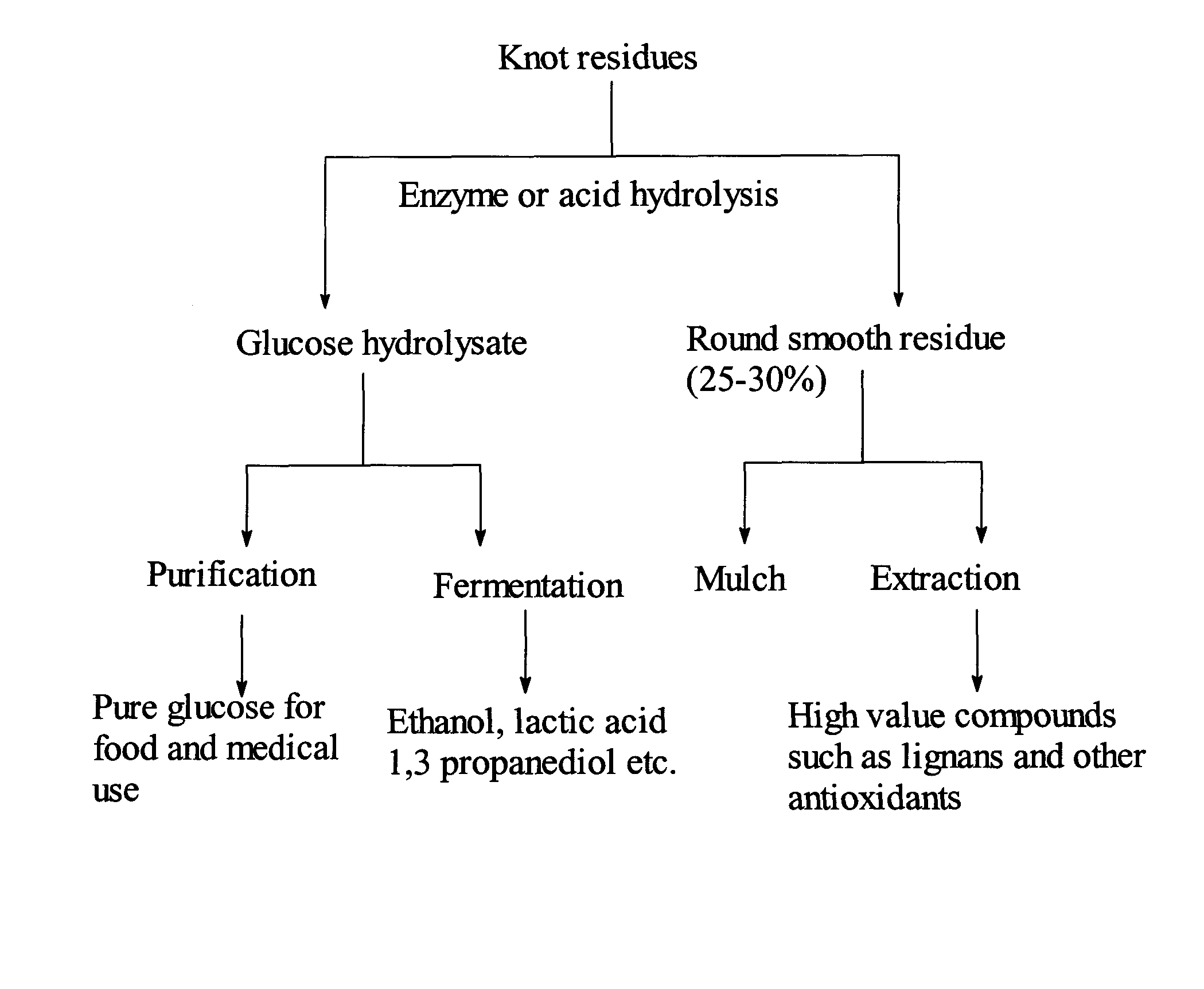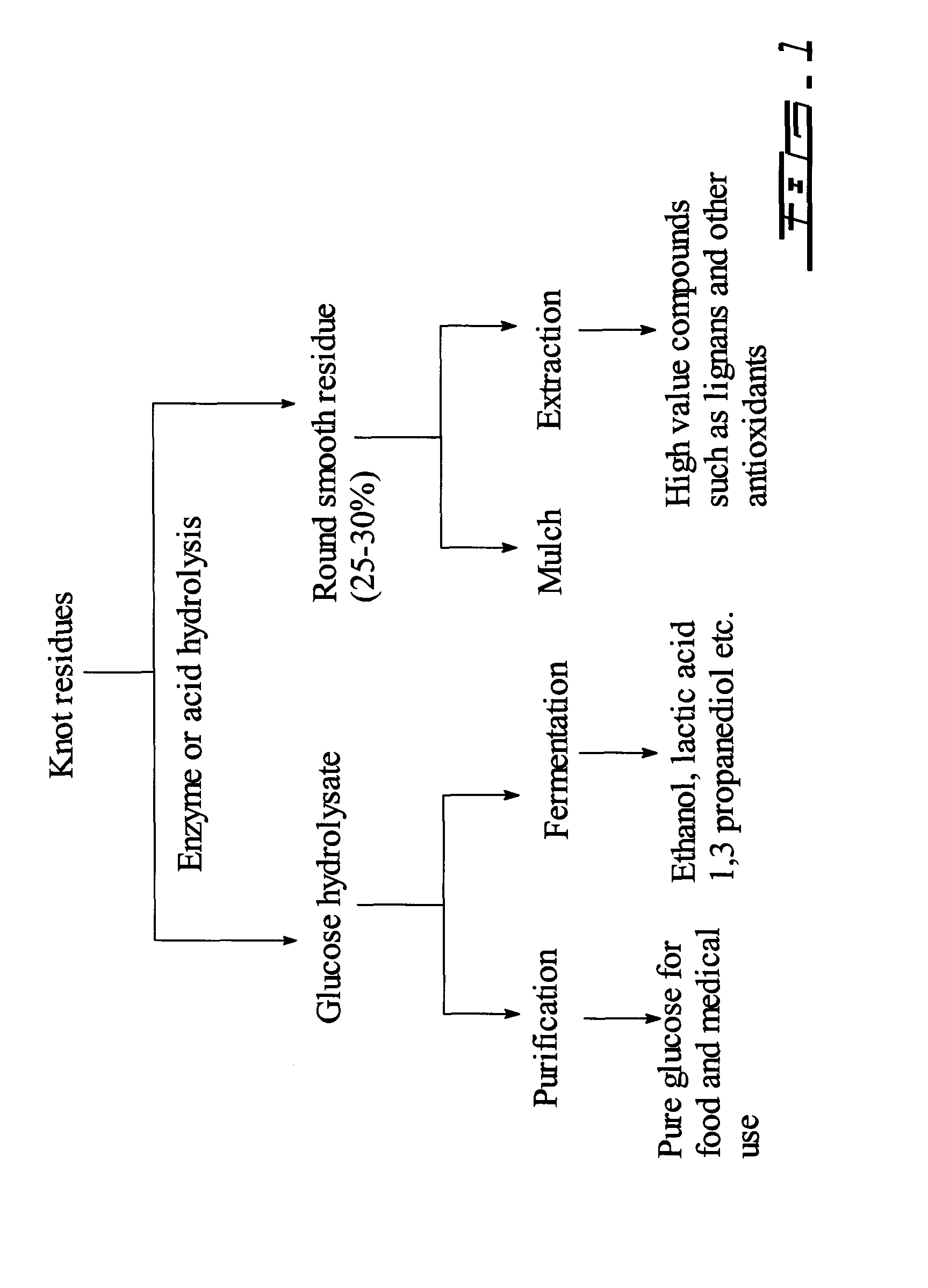Conversion of knot rejects from chemical pulping
- Summary
- Abstract
- Description
- Claims
- Application Information
AI Technical Summary
Benefits of technology
Problems solved by technology
Method used
Image
Examples
example 1
[0032]The knot samples were collected from the knotter, an equipment to separate knot rejects after chemical pulping stage. The knot samples were washed with water in the laboratory and analysed for chemical composition. It is readily evident from the results in Table I, that the knot rejects have a high content of glucose with a small amount of hemicellulose sugars.
TABLE 1The chemical composition of unwashed and washed rejects from knotscreeningConcentration (%)Unwashed samplesWashed sampleExtractives (acetone)1.91.8Lignin (acid insoluble)18.318.0Lignin (acid soluble)13.48.2Galactose0.40.2Glucose52.964.7Xylose3.74.4Mannose4.33.9
example 2
[0033]The sample of rejects described in Example 1 was subjected to an enzyme hydrolysis. A commercial cellulase (Celluclast 1.5 L) supplemented with a commercial beta-glucosidase (Novozyme 188) was used. The hydrolysis was carried out at 50° C., at a consistency varying between 2 to 10%, for a treatment time up to 95 hours. The pH was maintained at 4.5 and the enzyme loadings were between 10 FPU to 20 FPU per gram o.d. substrate.
[0034]It is readily evident from the results in Table II and FIGS. 2 and 3 that a large amount of cellulose in the rejects is found to be easily hydrolyzed by the treatment using a relatively low enzyme loading between 10 to 20 FPU (filter paper unit) per gram of oven-dried knot residue. The resultant hydrolysate is rich in glucose, representing a valuable intermediate material for producing high value industrial chemicals and biofuel, such as ethanol, lactic acid, 1,3 propanediol, polyhydroxyalkanoates (PHAs) etc.
TABLE IIThe concentrations of glucose in th...
example 3
[0035]To determine the feasibility of carrying out enzymatic hydrolysis on an industrial scale, cellulase hydrolysis of knot rejects at high substrate consistency was carried out in a 5 kg-capacity pilot scale vessel. As shown in FIG. 4, a significant high final glucose concentration was observed after 48 hours of cellulase hydrolysis of knot rejects at 20% solid concentration. The final glucose concentration in the hydrolysate reached over 100 g / L. This is the highest glucose concentration derived from lignocellulosic materials that has ever been reported in the literature. The high glucose concentration will greatly enhance the efficiency of subsequent fermentation of glucose to ethanol.
PUM
| Property | Measurement | Unit |
|---|---|---|
| Fraction | aaaaa | aaaaa |
Abstract
Description
Claims
Application Information
 Login to View More
Login to View More - R&D
- Intellectual Property
- Life Sciences
- Materials
- Tech Scout
- Unparalleled Data Quality
- Higher Quality Content
- 60% Fewer Hallucinations
Browse by: Latest US Patents, China's latest patents, Technical Efficacy Thesaurus, Application Domain, Technology Topic, Popular Technical Reports.
© 2025 PatSnap. All rights reserved.Legal|Privacy policy|Modern Slavery Act Transparency Statement|Sitemap|About US| Contact US: help@patsnap.com



